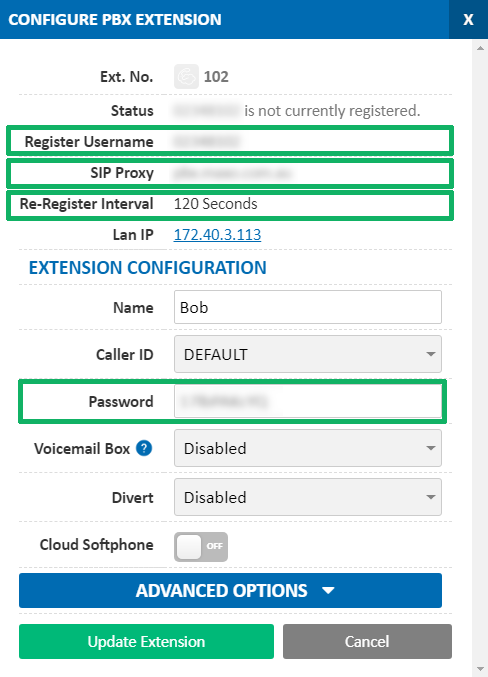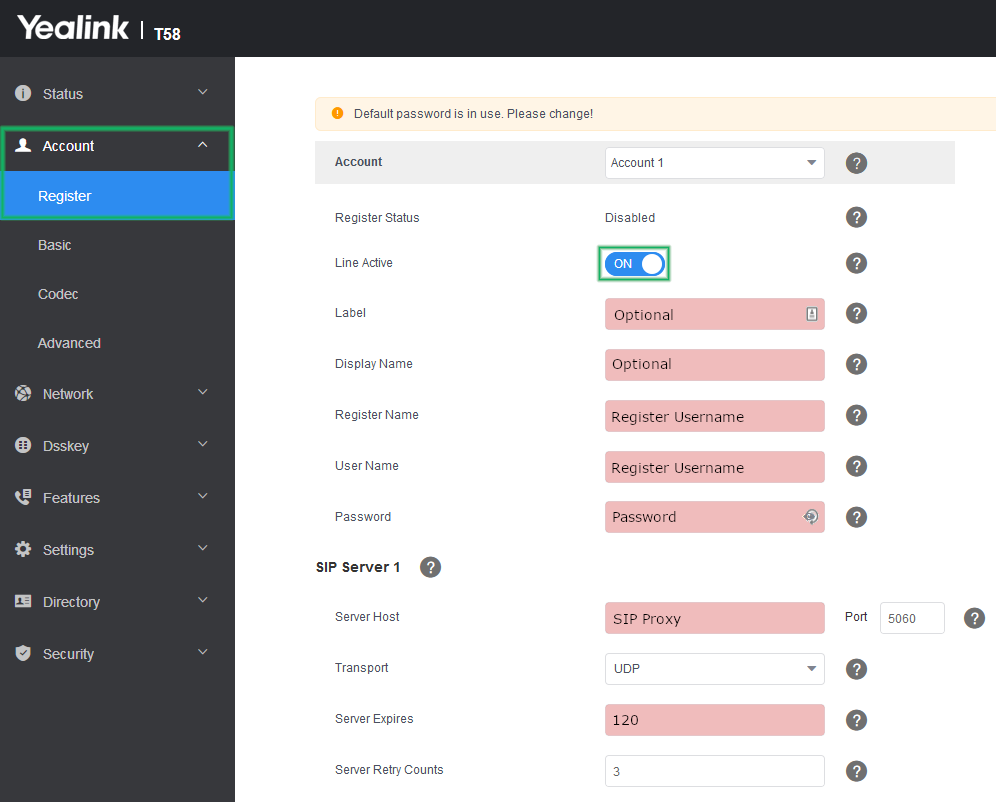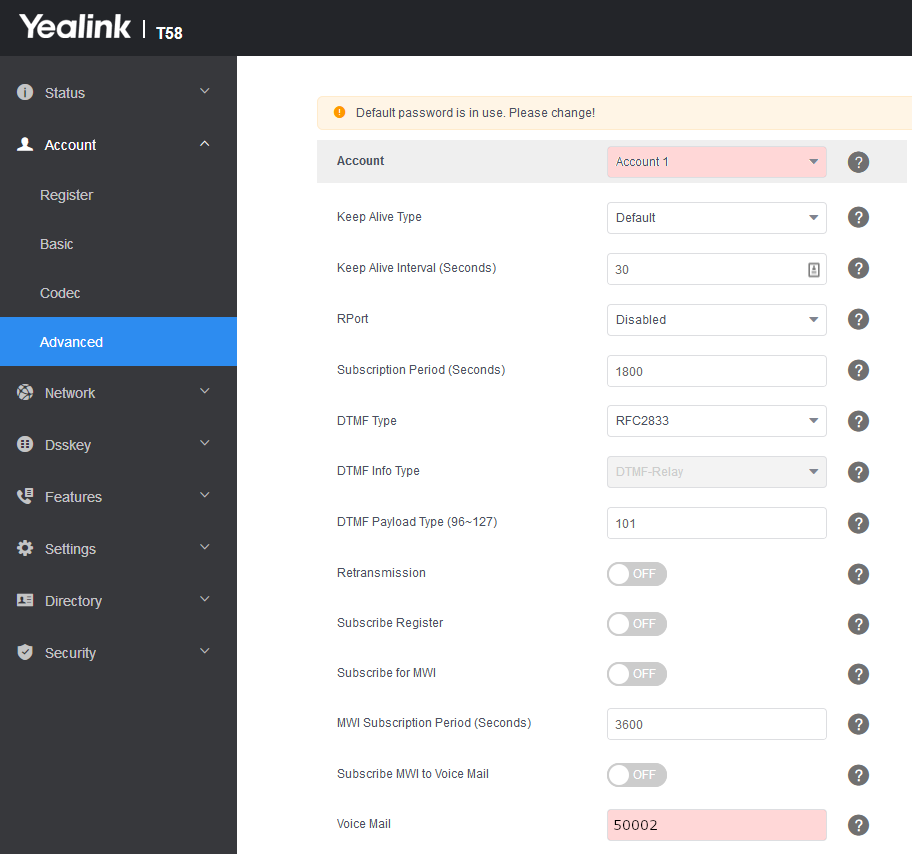Manually Configure Yealink T5 Series
Before you begin, ensure that you've created your extension in the My Account Portal, https://my.maxo.com.au/. To retrieve the details of an existing extension, or create a new extension, login to the My Account Portal and select PBX Extensions or SIP Trunks from the menu, depending on your service type. If you're creating a new extension, click the Add Extension button, fill in the details and click Save. For additional information on creating an extension, please see Portal Guide - PBX Extensions and Sip Trunks Find the extension number you're configuring, then click Edit. Take note of the following fields, highlighted in the image below, as you'll need these to setup the device. Note that if the extension is already configured on a device, you'll need to reconfigure, power down or factory reset the currently connected device before the required information will be displayed.
Note: If your phone has been used with another provider in the past, please factory reset it before continuing. To do so, hold OK for about 8 seconds, until you see the 'Reset to Factory?' prompt, then press OK.
To configure the Yealink T5 Series to your MaxoTel account, first retrieve the IP Address so that you can log into the 'Web Configuration' via your computer. To do this, the press the 'OK' button in the middle of the D-Pad. The IP Address should show up in the Status Page. Enter The IP Address into your web browser.
Once you are on the Web Configuration page enter the username and password. By default the username will be 'admin' and the Password will be 'admin'.
Note: If the Yealink configuration page is green and white, with the tabs along the top, please follow the Manually Configure Yealink T4 Series guide
Once you have successfully logged in, click on the 'Account' section on the left menu. Set the line to active, then enter your details as the below screenshot and table shows:
| Yealink | My Account Portal |
|---|---|
| Register Name | Register Username |
| User Name | Register Username |
| Password | Password |
| Server Host | SIP Proxy (normally sip.maxo.com.au or pbx.maxo.com.au) |
Hit the 'Confirm' Button at the bottom of the page to save the details. Once the page has reloaded, click on advanced and type '50002' into the 'Voicemail' field. This is the voicemail number. Again hit 'Confirm' to save the settings.
Next, click on the 'DSSKey' section on the left. In here you will configure multiple DSS keys (line keys) to all use Account 1 on the handset, allowing you to make, receive and manage multiple calls through your extension number, by showing each call on its own DSS Line key.
Feel free to also setup some Speed Dials for important numbers. If you would like to setup BLF (Busy Lamp Field) to see the status of the other extensions please refer to the BLF Guide for this phone model
Now that the lines have been configured, you will now want to set the time zone and time format, which can be done under the top 'Settings' tab, and then the 'Time and Date' button on the left.
At this point, the phone should be ready to go. If you have any troubles making and receiving calls from here on in, please give MaxoTel a call on 1800 12 12 10.
Additional Settings
NBN Users
If you experience audio issues when there is more than one concurrent call in progress on your NBN connection, you may need to change the NBN traffic class used by your voice traffic. There are two options for traffic classes below - if you're experiencing issues with one, please try the other.
To access this setting, choose Network > Advanced and locate the QoS section.
TC1 - High Priority, but limited bandwidth.
This traffic class can only support a limited number of calls (normally 1), depending on how much bandwidth has been purchased by your ISP. This is different to your normal (25/5, 50/20, etc.) bandwidth.
Audio QoS: 46
SIP QoS: 26
TC4 - Lower Priority, with all available bandwidth.
Phones in this traffic class will be able to utilise the full bandwidth of your NBN connection (eg. 50/20)
Audio QoS: 26
SIP QoS: 26
SIP Port Number
On some routers, it may be necessary to manually set each phone to a different local port number to mitigate some NAT related problems. To access this setting, choose Settings > SIP and locate Local SIP Port
For each device you're changing, we recommend incrementing this port number, beginning at 5070 for the first handset, 5071 for the second, etc.
 Australian Sales team about our phone system plans?
Australian Sales team about our phone system plans?




